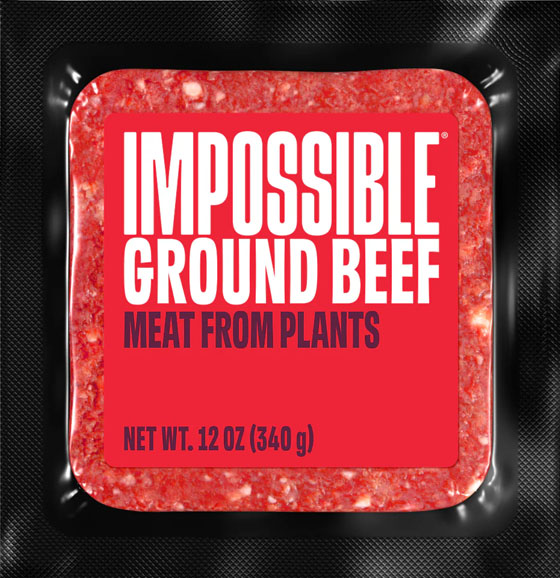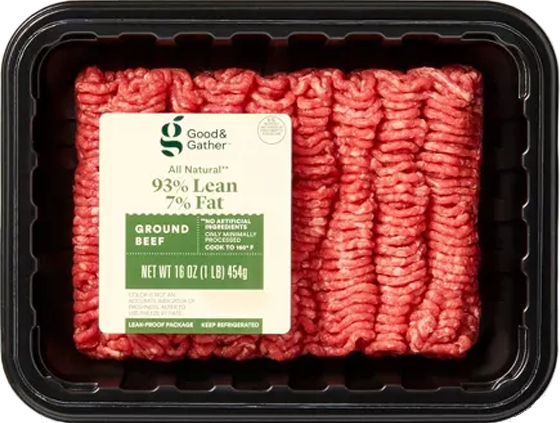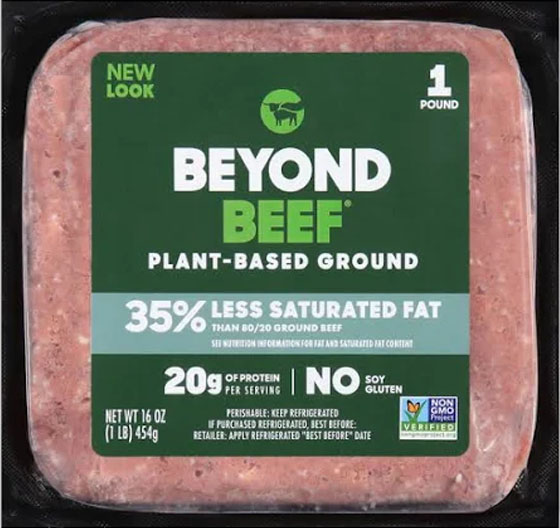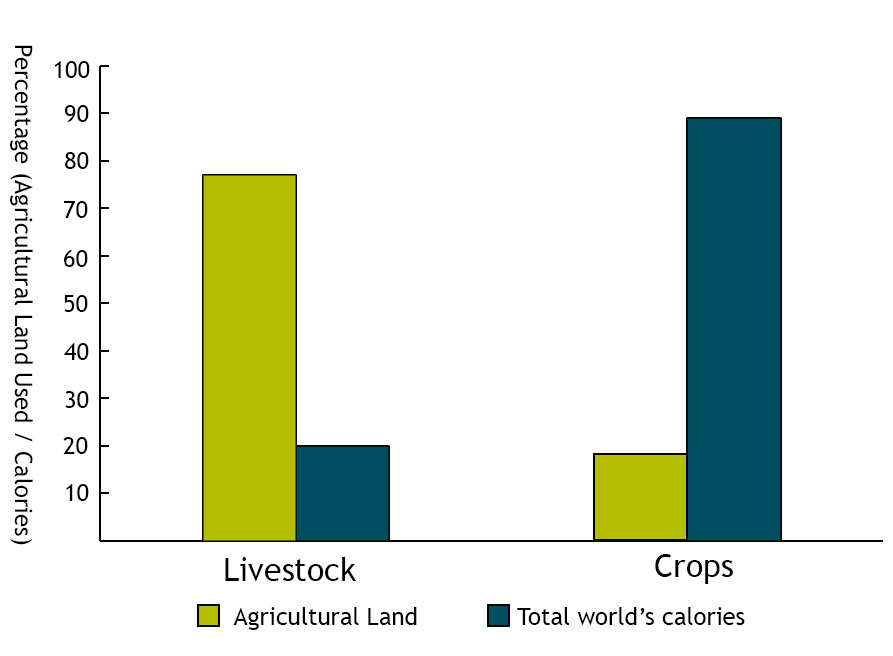This publication provides a clear and balanced comparison of plant-based and animal-based proteins in our food.
It looks at the nutritional value, environmental impact, and health effects of each type of protein. The goal is
to help readers understand more about these protein sources without saying whether one is better than
another—in other words, to inform and educate, giving everyone the knowledge to learn about different
dietary options.
Protein
Protein is one of the primary macronutrients for the human body. Some common foods containing high protein are
chicken, beef, eggs, fish, peanut butter, almonds, and lentils. The production of animal proteins—such as
meat, dairy, and their derivatives—is believed to contribute to environmental problems through higher
greenhouse gas emissions, water use, and land use (Springmann et al., 2018). Consuming red meat is also strongly
associated with high risks to cardiovascular health, especially with high consumption of processed meat (Zhong
et al., 2020).
These negative impacts on human health and the environment may encourage people to consider adopting a
plant-based diet (Pierce & Ignaszewski, 2022), which may include the consumption of plant-based protein.
Introducing plant-based protein as an alternative to animal-based protein can diversify people’s dietary
options and promote the use of food technology to provide nourishing and sustainable food. We will compare the
benefits and trade-offs of plant-based and animal-based proteins.
Understanding Protein in Our Diet
Protein plays an important role in normal body functions. It can be found in the hair, skin, muscles, bones,
nails, and organs. It has several important functions, including building bones and muscles, metabolic
reactions, cellular repair, immune response, and as an energy source.
When protein is consumed, it is digested and broken down into amino acids (AA). Proteins are comprised of 20
distinct amino acids; nine of which cannot be produced by the human body. These nine amino acids are called
indispensable amino acids (IDAA) because we have to consume them through our diet:
lysine, histidine, isoleucine, leucine, methionine, phenylalanine, threonine, tryptophan, and valine. The other
11 amino acids are termed dispensable amino acids (DAA) because our bodies can produce
them, provided our diet supplies adequate nitrogen and energy (Puigserver, 2018).
The National Academy of Medicine recommends that adults consume 0.8 g of protein for every kilogram of body
weight per day (Kreider et al., 2010), and protein intake should make up 10% to 35% of calories consumed each
day.
Here are some guidelines for more specific situations: Women in the first trimester of pregnancy should consume
0.8 g/kg body weight per day and increase to 1.1 g/kg body weight per day during their second and third
trimesters (Murphy et al., 2021). For nonpregnant women, consuming at least 1.2 g/kg body weight per day is
recommended, especially to maximize muscle growth and strength (Lemieux et al., 2013).
For men, the recommended protein intake is 1.0–1.2 g/kg body weight per day, which should increase to
1.6–1.8 g/kg body weight per day for male athletes (Lemieux et al., 2013). For boys and girls younger than
19 years old, the recommended protein intake is 0.85–1.2 g/kg body weight per day (Hudson et al., 2021).
Protein needs to be consumed sufficiently but not excessively to avoid putting too much stress on the liver and
causing blood vessel disorders. In contrast, insufficient protein intake can lead to the loss of muscle mass,
anemia, and slower body metabolism.
| Amino Acids |
80% Lean Beef |
93% Lean Beef |
Pork |
Impossible Burger |
Beyond Burger |
| Indispensable Amino Acids (IDAA) |
| Histidine |
0.65 |
0.85 |
0.62 |
0.42 |
0.50 |
| Isoleucine |
1.02 |
1.34 |
0.90 |
0.87 |
1.00 |
| Leucine |
1.73 |
2.20 |
1.48 |
1.35 |
1.69 |
| Lysine |
1.79 |
2.32 |
1.55 |
1.02 |
1.36 |
| Methionine |
0.54 |
0.72 |
0.49 |
0.19 |
0.26 |
| Phenylalanine |
0.93 |
1.14 |
0.78 |
0.93 |
1.16 |
| Threonine |
0.92 |
1.19 |
0.83 |
0.81 |
0.75 |
| Tryptophan |
0.25 |
0.33 |
0.23 |
0.21 |
0.23 |
| Valine |
1.15 |
1.39 |
0.97 |
0.94 |
1.12 |
| Total IDAA |
8.98 |
11.47 |
7.85 |
6.63 |
8.02 |
| Dispensable Amino Acids (DAA) |
| Alanine |
1.46 |
1.56 |
1.16 |
0.75 |
0.88 |
| Arginine |
1.50 |
1.74 |
1.29 |
1.11 |
1.63 |
| Asparagine |
1.96 |
2.48 |
1.71 |
1.91 |
2.23 |
| Cysteine |
0.23 |
0.29 |
0.19 |
0.35 |
0.27 |
| Glutamine |
3.09 |
3.94 |
2.57 |
3.58 |
3.18 |
| Glycine |
1.74 |
1.35 |
1.29 |
0.73 |
0.80 |
| Proline |
1.22 |
1.10 |
0.93 |
0.82 |
0.89 |
| Serine |
0.80 |
0.96 |
0.70 |
0.72 |
0.96 |
| Tyrosine |
0.80 |
1.01 |
0.71 |
0.68 |
0.78 |
| Total DAA |
12.80 |
14.43 |
10.55 |
10.65 |
11.62 |
| Total Amino Acids |
21.78 |
25.90 |
18.41 |
17.28 |
19.64 |
Table 1. Amino Acid Content (Percent) of 113 g of Burger Patties. These data determine the
digestibility of indispensable and dispensable amino acids found in animal and plant-based burgers. From
“Digestible indispensable amino acid score (DIAAS) is greater in animal?based burgers than in
plant?based burgers if determined in pigs,” by N. S. Fanelli, H. M. Bailey, T. W. Thompson, R.
Delmore, M. N. Nair, and H. H. Stein, 2021, European Journal of Nutrition, 61, p. 463 ().
Copyright 2021 by Springer Nature.
Animal-Based Protein: A Traditional Perspective
People tend to consider dairy, poultry, and meat products as containing high levels of protein. One percent milk
contains 8 g of protein per 1 cup of milk (244 g), eggs contain 6 g of protein per one large egg (50 g), and
ground beef (85% lean meat, 15% fat) contains 19 g per 85 g serving. Animal-based proteins are believed to have
a complete amino acid profile (when the protein contains appropriate amounts of IDAA)
and better digestibility (Fanelli et al., 2021) than plant-based proteins.
Animal proteins have a significantly higher number of IDAA, such as leucine and lysine. In the human body,
leucine conducts anabolic activity and acts as a primary building block of muscle protein accretion and
hypertrophy (Breen & Churchward-Venne, 2012). Lysine is needed for body growth, especially to produce
carnitine, which helps convert fatty acids into energy and lowers the cholesterol level of the body. Its role is
also crucial for calcium absorption and the formation of collagen in bones and connective tissues (Fini et al.,
2001). In terms of DAA, alanine and glycine quantities are significantly higher in animal protein than in
plant-based protein (Table 1). Overall, animal protein seems to provide more IDAA when compared to plant-based
protein.
In addition to having a more complete IDAA profile, animal-based proteins tend to be more easily accessible and
affordable. In many supermarkets, animal-based protein products are more prominently displayed, while
plant-based products are often restricted to a specific, designated area. In terms of price, animal-based
protein is significantly cheaper compared to plant-based protein (Figure 1).
Scroll for more


Kroger 80% lean ground beef: $5.79/lb
Impossible (plant-based) ground beef: $8.39/lb


Good & Gather ground beef 93% lean: $7.49/lb
Beyond Beef (plant-based ground beef): $8.99/lb


Gardein plant-based ground beef: $9.59/lb
Figure 1. Price Comparison Between Ground Beef and Plant-Based Ground Beef Alternatives Found at
Online Grocery Websites. These prices are point-in-time, nonpromotional prices, calculated per pound for
products available in stores in September 2023.
According to Livestock’s Long Shadow, a report published by the Food and Agriculture Organization
of the United Nations (Steinfeld et al., 2006), animal agriculture is responsible for 18% of greenhouse gas
emissions (GHG), with this percentage continuing to increase over time. Manure management is one of the major
causes of GHG. As manure decomposes, nitrous oxide and methane are released into the atmosphere. Besides GHG,
problems also arise with water and land use. A large amount of water is used for animal feed production, animal
hydration, and cleaning up confined-animal feeding operations and slaughterhouses. The total water used for
global livestock feed production is estimated to be 4,387 km3 per year (Heinke et al., 2020).
Approximately 77% of global farmland is dedicated to livestock, including both pasturelands for grazing and
croplands for growing livestock feed. Only 18% of the world’s agricultural land is used to produce food
for direct human consumption, and just 37% is used for protein production. The current use patterns for
agricultural land mean we are not maximizing food production for human consumption (Poore & Nemecek, 2018).
If agricultural land use were shifted toward the direct production of human food crops, we could increase the
world’s calories by approximately 88% (Figure 2).
 Figure 2. Comparison Between Agricultural Land Used to Feed Livestock and Land Used For Direct Human
Food Consumption (Crops). From “Meat less: The next food revolution,” by D. J. McClements, 2023,
Springer ().
Figure 2. Comparison Between Agricultural Land Used to Feed Livestock and Land Used For Direct Human
Food Consumption (Crops). From “Meat less: The next food revolution,” by D. J. McClements, 2023,
Springer ().
While the environmental impact of producing animal-based proteins is profound, the health implications of
consuming these proteins further amplify the concerns. Animal proteins such as processed meat and red meat are
associated with chronic and cardiovascular disease (de Mederios et al., 2023). The primary reason they are
linked to chronic diseases is the significant amount of saturated fat they contain. Consuming red meat
excessively can lead to an over-intake of sulfur-containing amino acids such as cysteine and methionine, which
are directly associated with heart disease and cancer (Schmidt, 2022). Processed meat is highly correlated to
cancer because of nitrite (NO2) curing, in which NO2 is usually added as a color fixative,
a powerful antioxidant, and a flavor enhancer. However, NO2 can react with amines (NH2) to
form carcinogenic compounds called nitrosamines. The World Health Organization has classified processed meat as
a Group 1 carcinogen (World Health Organization, 2015), meaning it is known to be carcinogenic to humans when
consumed in large quantities over time. Readers should make informed choices and consult with health
professionals regarding their diets.
Plant-Based Protein: A New Age Approach
The most common plant proteins that people consume are soy, nuts, legumes, peas, quinoa, and marine-based plants
such as seaweed. Over time, food technologists developed plant-based proteins that mimic animal-based proteins
to make them more appetizing and improve their texture and functional properties. These plant-based proteins
that mimic animal-based proteins are often considered animal-based product alternatives. Even though they are
plant-based proteins, their appearance is usually similar to animal-based proteins such as milk, cheeses, and
meats (McClements & Grossman, 2021). These products in the market are also sometimes called plant-based
milk, plant-based cheese, and plant-based meat.
Plant-Based Milk
Plant-based milk was invented more than a century ago. A Chinese biologist-engineer named Li Yu-Ying set up his
first soy milk factory in Paris in 1910. In the 1920s, soy milk production began in the United States and China,
and production has significantly increased ever since. Soy milk is a very popular alternative to cow’s
milk because it has a lower saturated fat content and reduces low-density lipoprotein (LDL) cholesterol in the
human body. Besides soy milk, there are other plant-based milks such as milks made with oats, coconut, rice, and
almonds. To compete with the calcium and vitamin levels of cow’s milk, most plant-based milks are
fortified with calcium and vitamins B12, B2, and D.
Soy milk has the highest protein content of all plant-milk products (Table 2). Soy milk is also considered very
nutritious because it contains high unsaturated fatty acids and beneficial phytochemicals such as phytosterols,
soy lecithin, and isoflavones. Isoflavones have been reported to be useful in alternative therapies for hormonal
disorders. They may also help to prevent chronic diseases, hormone-dependent cancers, and cardiovascular disease
(Olías et al., 2023). However, soy milk does have some downsides, including its “beany”
flavor and the potential to cause allergic reactions in people who are allergic to soy.
| |
Calories |
Carbohydrates (total) |
Sugars |
Fat (total) |
Protein |
| Cow’s milk (whole) |
150 |
12 g |
12 g |
8 g |
8 g |
| Cow’s milk (1%) |
110 |
12 g |
12 g |
2 g |
8 g |
| Cow’s milk (skim) |
80 |
12 g |
12 g |
0 g |
8 g |
| Almond milk (unsweetened) |
60 |
8 g |
7 g |
2.5 g |
1 g |
| Soy milk (unsweetened) |
80 |
4 g |
1 g |
4 g |
7 g |
| Rice milk (unsweetened) |
120 |
22 g |
10 g |
2 g |
0 g |
| Coconut milk beverage (unsweetened) |
50 |
2 g |
0 g |
5 g |
0 g |
Table 2. Milk and Milk Alternatives: Nutrition Comparison per 8 Fluid Ounces.
Note. From “Comparing milks: Almond, dairy, soy, rice, and coconut,” by J. Kubala and B.
Krans, 2023, Healthline ().
Plant-Based Cheese
Plant-based cheese is also a product that food scientists and technologists have been developing over the years
to imitate some attributes of real cheese, such as its texture, melting capability, aroma, and ability to shred
(Grossmann & McClements, 2021). There are two popular methods to produce plant-based cheese; one is based on
the fractionation of plant ingredients and the other uses tissue disruption.
The fractionated plant-ingredient method incorporates different plant-derived
ingredients such as fat, protein, polysaccharides, and gums to generate a composition of plant-based cheese that
is identical to cheese. Examples of proteins that are used for this method are tofu (soy), chickpea, and pea
protein.
The tissue disruption method breaks down plant materials into small particles and
dissolved molecules, which are then turned into plant-based cheese by promoting gelation (the process through
which a liquid turns into a gel; McClements et al., 2019). Examples of protein sources for this method are soy
milk, cashews, almond nuts, and lupine paste.
Table 3. Nutritional Fact Comparison Between Plant-Based and Animal-Based Cheese per 28 g Serving.
| Products |
Follow Your Heart Mozzarella
(Plant-Based) Cheese |
Sargento Mozzarella
(Animal-Based) Cheese |
| Calories |
80 |
90 |
| Total Fat (g) |
6 |
5 |
| Saturated fat (g) |
5 |
3 |
| Trans fat (g) |
0 |
0 |
| Cholesterol (mg) |
0 |
15 |
| Sodium (mg) |
280 |
190 |
| Total Carbohydrate (g) |
6 |
2 |
| Dietary Fiber (g) |
0 |
0 |
| Total sugar (g) |
0 |
0 |
| Protein (g) |
1 |
7 |
| Calcium (mg) |
2 |
200 |
| Potassium (mg) |
4 |
50 |
Note. From the respective companies’ websites: Follow Your Heart ()
and Sargento ().
With the rapid growth of the plant-based cheese market, some products still need improvement if they are to be
comparable to real cheese. It is reported that the majority of plant-based cheeses in the U.K. are made with
either coconut oil, nuts, palm oil, rice, soy, and/or sunflower oil (Saraco & Blaxland, 2020). Some
plant-based cheeses are high in saturated fat because of their high content of coconut oil. Most of them are
also lower in protein and higher in sodium because they are made of functional ingredient combinations such as
starches, gums, and binders (Table 3). The use of multiple ingredients has been a major concern in the
development of plant-based products since customers usually prefer “clean labeling” (in other words,
a minimal ingredients list).
Some people might have concerns regarding the health claims of plant-based cheese compared to dairy-based cheese
because it contains quite a few food additives to mimic the textural properties of traditional cheese. Some of
the additives used in plant-based products sound foreign or like complex chemicals to the general public.
Recently, campaigns like the Clean Labels movement have encouraged food developers to produce easy-to-understand
labels and list natural ingredients with minimal artificial additives (Wang & Adhikari, 2023). For example,
some plant-based cheese producers try to reduce or even eliminate the use of carrageenan. Carrageenan is not a
synthetic or chemical additive but is made of a red seaweed called Irish Moss. This food additive is often used
as a thickener and does not have any nutritional value (De Ruiter & Rudolph, 1997). People may reject
unfamiliar food ingredients out of concerns that they are unhealthy. Therefore, the public needs education, even
with the Clean Labels movement, to improve their familiarity with food ingredients.
Plant-Based Meat
Plant-based meat is one of the most popular animal-based protein alternatives and is offered in many restaurants
and other food chains. Producers of plant-based meats structure their products as similarly as possible to real
meat to produce a mouthfeel that is similar to that of real meat. Meat is made of muscle fibers called actin and
myosin that allow muscles to expand and contract. When meat is cooked, the rise in temperature breaks down
collagen, the connective tissue that binds these muscle fibers together (Ertbjerg & Puolanne, 2017). This
softens the meat’s texture, which can then become tougher as the meat loses moisture. The mouthfeel,
texture, and flavor of the meat are predominantly influenced by its adipose tissue, which consists of fat cells
(Hausman et al., 2018).
Proteins used in plant-based meat serve many functions (McClements, 2023). Protein acts as a binder to hold
fluid, creating a juicy mouthfeel, and as an emulsifier to hold both hydrophobic
(those that repel or fail to mix with water) and hydrophilic (those that mix with or
dissolve in water) ingredients together. Examples of proteins used for plant-based meat are soybeans, peas,
wheat, corn, rice, mung beans, and lentils. The other important role of plant protein in plant-based meat is as
a texturizer, as is the case for texturized vegetable protein (TVP). Table 4 lists common ingredients and their
purposes in plant-based meats. Plant-based meats have been improved using emerging tools such as 3D printers,
high moisture extruders, and shear cells. These methods aim to create fibrous structures that simulate muscle
tissue.
Table 4. Ingredients in Plant-Based Meat and Their Purposes.
| Ingredients |
Purpose |
Examples |
| Texturizers |
Provide meat-like structures and textures, such as firmness, chewiness,
juiciness |
Plant proteins, starches, and gums |
| Binders |
Hold the different ingredients together into a solid mass |
Plant-based fats and oils |
| Micronutrients |
Provide desirable textures and mouthfeel, and carry oil-soluble
nutrients, colors, and flavors |
Vitamins and minerals |
| Emulsifiers |
Help to form and stabilize fat droplets |
Proteins and lecithin |
| Pigments |
Provide desirable color to the product, and may be designed to change
during cooking |
Natural colors |
| Flavors |
Provide a meat-like flavor profile |
Flavorings, spices, herbs, sugars, and salts |
| Preservatives |
Protect the food from chemical or microbial degradation |
Natural antioxidants and antimicrobials |
Note. From “Meat less: The next food revolution,” by D. J. McClements, 2023, Springer ().
Compared to animal-based protein, plant-based protein is often viewed as more planet-friendly and efficient in
delivering calories to people. As noted earlier, livestock inefficiently converts feed to meat. For instance,
feeding 100 calories to chickens, pigs, and cows yields only 12, 10, or 3 calories of meat, respectively
(Zacharias & Stone, 2018). The Good Food Institute also shows that the production of plant-based protein
uses up to 93% less land and 99% less water compared to animal-based proteins.
Several pieces of evidence say a diversified plant-based protein diet can be healthier. A diversified plant-based
diet means consuming plant proteins from different sources to complete the essential nutrients that are needed
by the body, including IDAA and other vitamins and minerals, such as vitamin B12, calcium, and iron.
It is also believed that plant-based protein may be safer to consume. Plant-based proteins such as plant-based
meat alternatives are usually thermally processed before they are distributed to consumers. When compared to a
piece of meat that may be served undercooked or other animal-based protein that is sometimes consumed raw,
plant-based protein may have a lower incidence of foodborne pathogen contamination. However, it also depends on
the cooking method that is applied to the food. Plant-based protein also has a reduced risk of zoonotic diseases
such as trichinosis (McClements, 2023).
Tasting the Trend: Tips and Recipes
Plant-based diets have become increasingly popular and can take various forms based on individual preferences and
available protein sources. For instance, vegans avoid all animal products, while vegetarians might consume dairy
and eggs but abstain from meat. Pescatarians eat fish but exclude red meat and poultry from their diets (Melina
et al., 2016).
Transitioning to a plant-based diet can be a personal journey. Some individuals initiate their shift by
designating specific meatless days, like “Meatless Mondays.” Others might transition incrementally,
starting as pescatarians, then moving to vegetarianism, and eventually becoming vegans. However, a full
transition to plant-based diets might not be desirable or feasible for everyone globally.
In many countries, limitations like geography and infrastructure mean that livestock, which feeds on locally
available grass, becomes the primary protein source. Such livestock are essential, especially in places where it
is challenging to farm food crops. For instance, in regions like northeast England, the rugged valleys and steep
terrain make it difficult to cultivate crops like corn, soybeans, and wheat. As a result, residents rely more on
grazing livestock such as sheep and cows for sustenance (McClements, 2023). Overall, while embracing a
plant-based diet and increasing the intake of plant-based proteins is commendable, it is essential to recognize
and respect the varying constraints and choices across different regions and cultures.
Overcoming the challenges associated with developing plant-based protein requires food scientists and food
industry professionals to collaborate to provide products that are accessible and healthier for people. Food
scientists are actively looking for other plant-based proteins that can be utilized as animal-based
alternatives. They also study other food ingredients such as carbohydrates and fats to improve the texture and
flavor of plant-based proteins (McClements, 2023).
Based on research conducted by food scientists, the food industry continues to develop plant-based protein that
is more analogous to animal-based protein, such as plant-based ground beef, chicken, tacos, salad dressing, etc.
The long-term goal is to make plant-based protein more common on menus at restaurants and cafes.
With the rising number of vegetarians and vegans, the food industry is also trying to provide more variations of
plant-based proteins (Bryant, 2023). For example, Beyond Meat collaborated with KFC to provide plant-based
chicken nuggets and with Panda Express to provide plant-based orange chicken. As people become more familiar
with plant-based protein, consumer willingness to purchase and obtain plant-based protein is expected to
increase.
Figure 3. Examples of the Collaboration Between Beyond Meat and Food Chains KFC and Panda Express
(Beyond Meat, 2019, 2022).

Conclusion
Animal-based proteins and plant-based proteins each have their advantages and disadvantages for human
consumption. Everyone has their dietary preferences, whether they are plant-based or animal-based. People are
encouraged to make balanced and informed dietary choices. However, in terms of promoting a more sustainable food
system and healthier environment, plant-based proteins seem to be a better overall solution.
The development of plant-based proteins is still ongoing and requires further improvement. More research can be
done to enhance the sensory experience and nutritional quality of these proteins. As people become more familiar
with plant-based proteins, their development will likely progress rapidly. The hope is that this will lead to a
more sustainable planet, allowing the next generation to benefit from the contributions of plant-based proteins
to our food system.
References
Beyond Meat. (2019, August 26). Beyond fried chicken - A Kentucky fried miracle.
Beyond Meat. (2022, September 7). Beyond™ The Original Orange Chicken™ is back by popular demand
at Panda Express® restaurants nationwide for a limited time, starting September 7 [Press release].
Breen, L., & Churchward-Venne, T. A. (2012). Leucine: A nutrient ‘trigger’ for muscle anabolism,
but what more? Journal of Physiology, 590(9), 2065–2066.
Bryant, C. (2023). US Plant-based Proteins Market Report 2023. Mintel Group Ltd.
de Mederios, G. C. B. S., Mesquita, G. X. B., Lima, S. C. V. C., Silva, D. F. O., Azvedo, K. P. M., Pimenta, I.
D. S. F., Oliveira, A. K. S. G., Lyra, C. O., Martínez, D. G., & Puivezam, G. (2023). Associations of
the consumption of unprocessed red meat and processed meat with the incidence of cardiovascular disease and
mortality, and the dose-response relationship: A systematic review and meta-analysis of cohort
studies.?Critical Reviews in Food Science and Nutrition, 63(27), 8443–8456.
De Ruiter, G. A., & Rudolph, B. (1997). Carrageenan biotechnology. Trends in Food Science and
Technology, 8(12), 389-394.
Ertbjerg, P., & Puolanne, E. (2017). Muscle structure, sarcomere length and influences on meat quality: A
review. Journal of Meat Science, 132, 139–152.
Fanelli, N. S., Bailey, H. M., Thompson, T. W., Delmore, R., Nair, M. N., & Stein, H. H. (2021). Digestible
indispensable amino acid score (DIAAS) is greater in animal?based burgers than in plant?based burgers if
determined in pigs. European Journal of Nutrition, 61, 461–475.
Fini, M., Torricelli, P., Giavaresi, G., Carpi, A., Nicolini, A., & Giardino, R. (2001). Effect of L-lysine
and L-arginine on primary osteoblast cultures from normal and osteopenic rats. Biomedicine &
Pharmacotherapy, 55(4), 213–220.
Grossmann, L., & McClements, D. J. (2021). The science of plant-based foods: Approaches to create nutritious
and sustainable plant-based cheese analogs. Trends in Food Science and Technology,
118(Part A), 207–229.
Hausman, G. J., Bergen, W. G., Etherton, T. D., & Smith, S. B. (2018). The history of adipocyte and adipose
tissue research in meat animals. Journal of Animal Science, 96(2), 473–486.
Heinke, J., Lannerstad, M., Gerten, D., Havlík, P., Herrero, M., Notenbaert, A. M. O., Hoff, H., &
Müller, C. (2020). Water use in global livestock production—opportunities and constraints for
increasing water productivity. Water Resources Research, 56(12), e2019WR026995.
Hudson, J. L., Baum, J. I., Diaz, E. C., & Børsheim, E. (2021). Dietary protein requirements in
children: Methods for consideration. Nutrients, 13(5), 1554.
Kreider, R. B., Wilborn, C. D., Taylor, L., Campbell, B., Almada, A. L., Collins, R., Cooke, M., Earnest, C. P.,
Greenwood, M., Kalman, D. S., Kersick, C. M., Kliener, S. M., Leutholtz, B., Lopez, H., Lowery, L. M., Mendel,
R., Smith, A., Spano, M., Wildman, R., … Antonio, J. (2010). International society of sports nutrition
exercise and sports nutrition review: Research and recommendations. Journal of International Society of
Sports Nutrition, 7, Article 7.
Kubala, J., & Krans, B. (2023). Comparing milks: Almond, dairy, soy, rice, and coconut. Healthline.
Retrieved September 4, 2023, from
Lemieux, F. C., Filion, M. E., Barbat-Artigas, S., Karelis, A. D., & Aubertin-Leheudre, M. (2013).
Relationship between different protein intake recommendations with muscle mass and muscle strength.
Climacteric, 17(3), 294–300.
McClements, D. J. (2023). Meat less: The next food revolution. Springer.
McClements, D. J., & Grossman, L. (2021). A brief review of the science behind the design of healthy and
sustainable plant-based foods. Nature Partner Journal Science of Food, 5(17), 1–9.
McClements, D. J., Newman, E., & McClements, I. F. (2019). Plant-based milks: A review of the science
underpinning their design, fabrication, and performance. Comprehensive Reviews in Food Science and Food
Safety, 18(6), 2047–2067.
Melina, V., Craig, W., & Levin, S. (2016). Position of the Academy of Nutrition and Dietetics: Vegetarian
diets. Journal of the Academy and Nutrition Dietetics, 116(12), 1970–1980.
Murphy, M. M., Higgins, K. A., Bi, X., & Barraj, L. M. (2021). Adequacy and sources of protein intake among
pregnant women in the United States, NHANES 2003–2012. Nutrients, 13(3), 795.
Olías, R., Delgado-Andrade, C., Padial, M., Marín-Manzano, M. C., & Clemente, A. (2023). An
updated review of soy-derived beverages: nutrition, processing, and bioactivity. Foods,
12(14), 2665.
Pierce, B., Ignaszewski, E., Gertner, D., & Leet-Otley, T. (2022). U.S. retail market insights for the
plant-based industry. Good Food Institute.
Poore, J., & Nemecek, T. (2018). Reducing food’s environmental impacts through producers and consumers.
Science, 360(6392), 987–992.
Puigserver, P. (2018). Signaling transduction and metabolomics. In R. Hoffman, E. J. Benz, L. E. Silberstein, H.
E. Heslop, J. I. Weitz, J. Anastasi, M. E. Salama, & S. A. Abutalib (Eds.), Hematology (7th ed.,
pp. 68–78). Elsevier.
Saraco, M. N., & Blaxland, J. (2020). Dairy-free imitation cheese: Is further development required?
British Food Journal, 122(12), 3727–3740.
Schmidt, K. (2022). Eating too many sulfur amino acids may boost cardiovascular disease and death risk.
American Heart Association.
Springmann, M., Clark, M., Mason-D’Croz, Wiebe, K., D., Bodirsky, B. L., Lassaletta, L., de Vries, W.,
Vermeulen, S. J., Herrero, M., Carlson, K. M., Jonell, M., Troell, M., DeClerck, F., Gordon, L. J., Zurayk, R.,
Scarborough, P., Rayner, M., Loken, Fanzo, J., …Willett, W. (2018). Options for keeping the food system
within environmental limits. Nature, 562, 519–525.
Steinfeld, H., Gerber, P., Wassenaar, T., Castel, V., Rosales, M., & de Haan, C. (2006).
Livestock’s long shadow: Environmental issues and options. Food and Agriculture Organization of
the United Nations.
Wang, S., & Adhikari, K. (2023). Clean labeling and the Real Food movement (Publication No. B 1476).
University of Georgia Cooperative Extension. /publications/detail.html?number=B1476
World Health Organization. (2015, October 26). Cancer: Carcinogenicity of the consumption of red meat and
processed meat.
Zacharias, N., & Stone, G. (2018). Eat for the planet: Saving the world one bite at a time. Abrams
Books.
Zhong, V. W., Horn, L. V., Greenland, P., Carnethon, M. R., Ning, H., Wilkins, J. T., Lloyd-Jones, D. M., &
Allen, N. B. (2020). Associations of processed meat, unprocessed red meat, poultry, or fish intake with incident
cardiovascular disease and all-cause mortality. JAMA Intern Med, 180(4), 503–512.